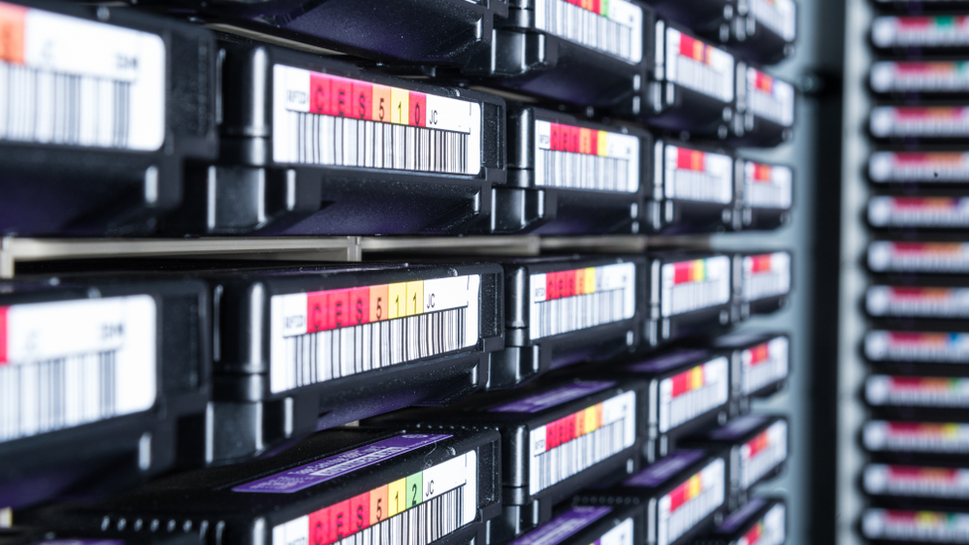Extraordinary 580TB tapes could help accelerate demise of hard disk drives
Magnetic ribbons and cheap-as-chips flash team together

IBM researchers and Fujifilm have teamed together to release a tape prototype with a capacity of 580TB (or 0.58PB).
That's the equivalent of nearly six of the biggest SSDs in the world (the Nimbus Data 100TB) or 29 Seagate Exos+ 20TB hard disk drives. More importantly perhaps, it is more than 32x the current LTO-9 tape technology thanks to a record breaking areal density of 317Gbits per square inch.
Fujifilm used Strontium Ferrite (SrFe) particles - and a number of techniques - to significantly boost the capacity of the tape; these include thinner tapes and longer tape lengths.
- Check out our list of the best portable SSD
- These are the best external HDD on the market right now
- Have a look at some of the best rugged hard drives
While this is more of a research milestone reached with no commercial launch date set, a spokesperson for IBM confirmed that "There is a standardized roadmap that has to be followed and that will put this on the market in a little less than 10 years. This is the driver of this demonstration — to show enterprises that tape will be viable for decades whereas HDD has hit a wall."
Hard drives: the end in sight?
Given that Fujifilm is a founding member of the LTO (Linear Tape Open) foundation, it is certain that the current technology will find its way into LTO tape at some point in the future. The current LTO-9 is set to hit 18TB with Gen 10, 11 and 12 hitting up to 144TB native. At 560TB, the prototype tape could be the percursor of a theoretical Gen 14, one likely to be launched after well 2030.
Hard drive manufacturers are well aware of the challenge facing that industry but are left with few options. A 18TB disk for example has an areal density of more than 1Tb per square inch, about 85 more than an LTO-9 tape. In other words, to match the capacity of a 560TB tape, hard disk platters must reach 85Tb per square inch, which could break the laws of physics.
Then there's the major inroads made by the likes of Toshiba, Samsung and Intel that are doing their earnest to lower the total cost of ownership for SSD to match that of HDD.
Are you a pro? Subscribe to our newsletter
Sign up to the TechRadar Pro newsletter to get all the top news, opinion, features and guidance your business needs to succeed!
2021 is the year when 5-bit-per-cell flash or PLC flash becomes mainstream and this could have a profound effect on capacity mix, pushing hard disk drives further into niche markets.
- We've shortlisted the best secure drives

Désiré has been musing and writing about technology during a career spanning four decades. He dabbled in website builders and web hosting when DHTML and frames were in vogue and started narrating about the impact of technology on society just before the start of the Y2K hysteria at the turn of the last millennium.